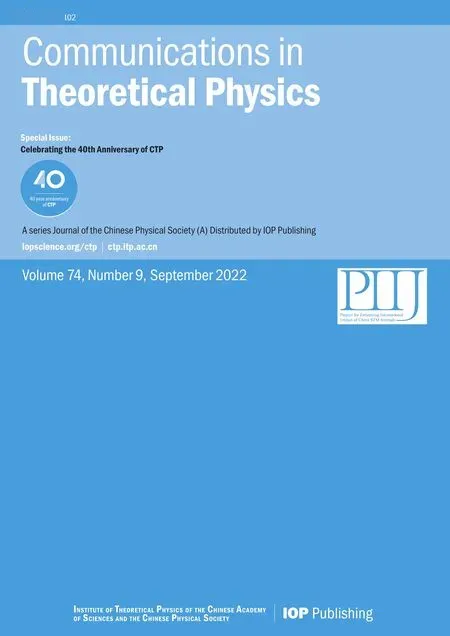Communications in Theoretical Physics
PAPERS
- The Gamow shell model with realistic interactions: a theoretical framework for ab initio nuclear structure at drip-lines
- Koopman analysis of nonlinear systems with a neural network representation
- Vector semi-rational rogon-solitons and asymptotic analysis for any multicomponent Hirota equations with mixed backgrounds
- The structural order of protein hydration water
- Phase behaviors of ionic liquids attributed to the dual ionic and organic nature
- Fluctuation assisted collapses of Bose–Einstein condensates
- QCD at finite temperature and density within the fRG approach: an overview
- Driving potential and fission-fragment charge distributions
- A prototype of quantum von Neumann architecture
- Cosmic inflation from broken conformal symmetry
- Relativistic Hartree–Fock model and its recent progress on the description of nuclear structure*
- Effects of the tensor force on low-energy heavy-ion fusion reactions: a mini review
- The microstructure and Ruppeiner geometry of charged anti-de Sitter black holes in Gauss–Bonnet gravity:from the critical point to the triple point
- The dynamical holographic QCD method for hadron physics and QCD matter
- High precision solutions to quantized vortices within Gross–Pitaevskii equation
- Application of kernel ridge regression in predicting neutron-capture reaction crosssections
- Unified neutron star EOSs and neutron star structures in RMF models
- The effective hydrodynamic radius in the Stokes–Einstein relation is not a constant
- Quantum dynamics of Gaudin magnets
- When null energy condition meets ADM mass
- Modelling drying pathways of an evaporating soft matter droplet
- Thawing k-essence dark energy in the PAge space
- Realizing number recognition with simulated quantum semi-restricted Boltzmann machine
- Bootstrapping Calabi–Yau quantum mechanics
- Chaotic shadows of black holes: a short review
- Lateral predictive coding revisited:internal model,symmetry breaking,and response time
- PV-reduction of sunset topology with auxiliary vector
- Two-Higgs-doublet models in light of current experiments: a brief review

